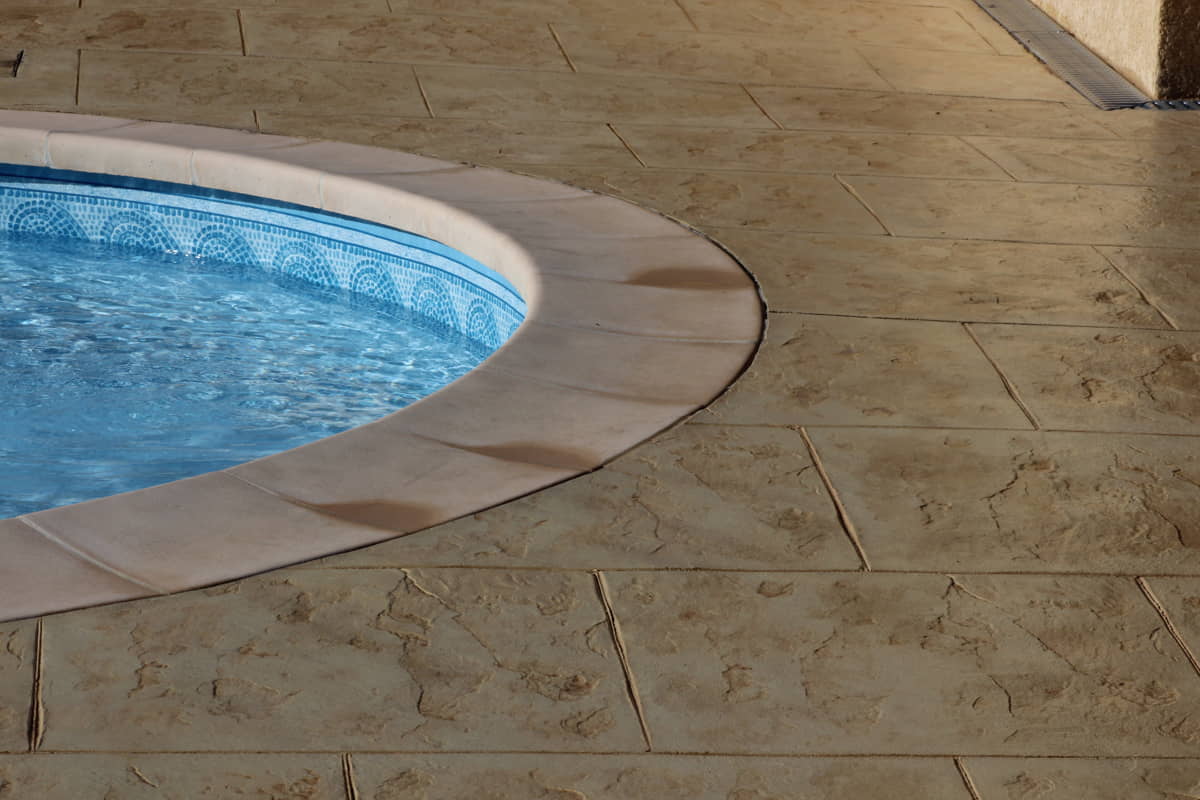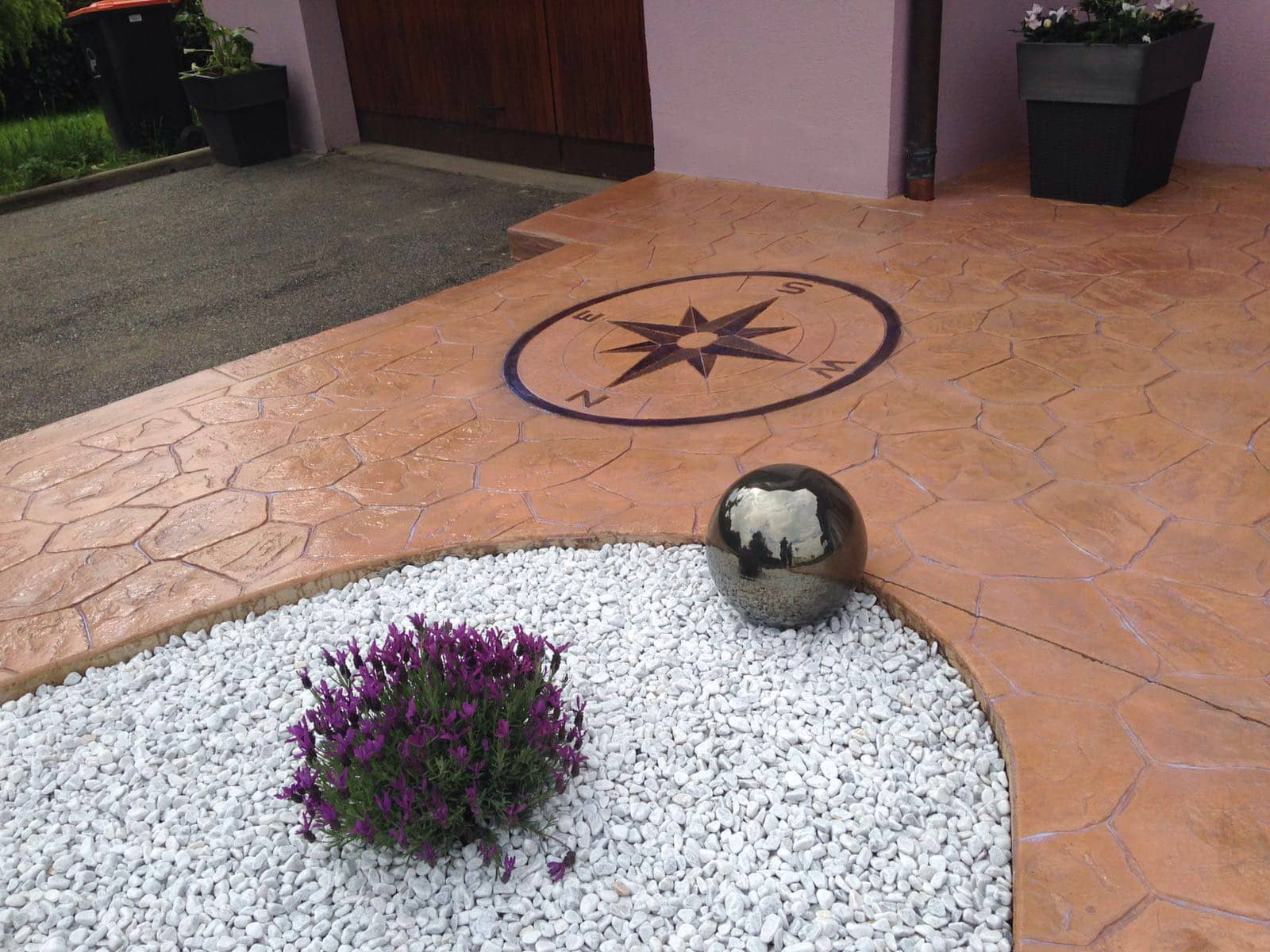Printed concrete moulds: types, differences and the most popular
printed-concrete moulds are templates used to decorate surfaces that are coated with this material with the shape you prefer, as we can choose from a large collection.
These moulds adapt perfectly to any type of area. Thus, they can be used on floors, walls or facades, so that each one has the desired appearance, regardless of its location.
Due to the resistance of the material and the large number of finishes that can be obtained, thanks to the moulds, it is very common to find this compound in public places with high traffic, regardless of whether they are outdoors, such as squares, pavements, swimming pools or large terraces.
With these moulds, many different types of textures can be reproduced, such as cobblestones, tiles, natural stone, wood, among others, but always using a material with a very high resistance. The wooden mould is often very successful because it fills every square centimetre with elegance and a rustic style that is very authentic.
In short, printed concrete moulds can replace other conventional materials to give floors and walls a different look.
Main characteristics of printed concrete moulds
First of all, the printed concrete moulds must have a certain thickness so that when applied to the surface and the material, it leaves a correct mark so that the finishes have a long durability.
Secondly, it is very important that their weight is balanced so that professionals can handle the moulds with ease and thus achieve the desired appearance on each surface.
Thirdly, it is essential that all the parts of a design system with printed concrete forms fit together perfectly, so that the aesthetic coherence of the overall finish is respected.
Fourthly, the handles of the moulds must be adjusted to facilitate the work of the professionals and, above all, to ensure that each print they make is identical to the previous one.
Advantages of using printed concrete moulds
Here are some of the advantages of using printed concrete moulds on any surface.
Diversity of designs
These moulds are a great decorative resource for those who want to achieve totally different finishes and textures. In fact, moulds can also be made to the buyer's taste for those who want to achieve the highest level of personalisation of spaces, both decoratively and constructively speaking.
Minimum execution times
Architecturally, it is always an advantage to use on-site mortars. This considerably reduces execution times. However, depending on the mould chosen, the times may vary and increase.

Lower price
Compared to other moulds in the construction sector, printed concrete moulds are much more affordable than other more traditional ones, which will reduce the final amount of the budget.
Limits weed growth
By using a material such as this, it prevents weeds from growing in and displacing the surface on which the printed concrete moulds are placed. In the case of ceramic tiles, paving stones and stones, roots and weeds can grow between the joints and water can displace the pieces.
Little care for a long service life
Once the printed concrete has been applied, little care is required to preserve it. This should be applied when the work is being carried out. Almost exclusively, it only suffers from the wear and tear caused by vehicles passing over it. In this case, it is sufficient to apply a coat of sealant. Thus, we have a material with great durability.
Occasional damage
Printed concrete is a material that is by no means easy to break or shatter. In fact, when it suffers a big impact, the most common thing is that only a mark is left; and for this to remain, it has to be a very strong blow with a blunt object.
The big differences between rigid and flexible moulds
As they are moulds that are produced with different materials, the big differentiating factor between both types of moulds is, precisely, the rigidity that they present, which will condition the way each one is used.
This is where the biggest difference lies, with works made with flexible moulds being much more bearable. On the other hand, rigid or semi-rigid moulds support more weight, and have handles for easier handling.
Another major difference is that flexible moulds are used on sites where space may limit the work itself, as they offer greater workability. These types of moulds can be bent in small spaces and, although they are less resistant, they can also be knocked out. Flexible moulds are the most suitable for marking corner recesses, joints between borders and work close to facades.
Types of printed concrete moulds: total adaptation to taste
The level of personalisation of a surface depends on the types of moulds available, so that any area can be renovated or created with printed concrete. Thus, there are moulds for floors, for walls and imitation wood.
Printed concrete moulds for floors
These are the most commonly used printed concrete moulds, as floors tend to be the surfaces that are most often renovated using this material. This is because they are surfaces exposed to heavy traffic and, consequently, to wear and tear.

Our range of floor moulds consists of 13 different collections with designs to suit all tastes. Thus, we have moulds in the shape of a fan, cobblestone, brick, stone, roadway, slab, border shapes, circular, blanket texture, among others. The use of each and every one of these must take place when the material is fresh.
Vertical printed concrete moulds
In this case, these types of moulds are for application on walls or facades. The size of the moulds for application on these vertically oriented surfaces is usually smaller, not exceeding 80 cm in length.
To decorate any area, we have a line of moulds for vertical surfaces where stone, brick or slate finishes always add a touch of naturalness.
Printed concrete moulds imitating wood
Printed concrete is undoubtedly the best way to replace natural wood. The same wood finish can be achieved in a more sustainable way (avoiding felling the wood) with our printed concrete moulds with imitation wood. But also faster, cheaper and, above all, creating new forms that are more durable over time.
With our printed woodgrain concrete forms, we not only perfectly imitate the beauty and look of wood, but they can also be applied to almost any interior or exterior surface.

Mould release agent and printed concrete, always together
Mould release agent, in powder or liquid form, is a basic product when building with moulds and printed concrete, as its function is very important as it prevents the mould from sticking to the concrete.
You can choose between different colour tones of release agent, from which you can choose between a shade similar to cement or another that evokes other types of effects.
Tips for applying the liquid release agent to the mould
Firstly, to apply Desmocem Liquid, it must be sprayed onto the printed mould and the surface to be worked on. Next, print by applying a little pressure and remove the part that has already been used. Thirdly, apply the product by brush, roller or spray. If the latter is used, it should be applied at a distance of between 30 and 40 cm apart. Lastly, the area must be coated to form a homogeneous film in which there are no puddles or very thick layers.
As advice, to apply this water-insoluble product, the ambient temperature must be between 5ºC and 30ºC and make sure that there is no excessive wind. If temperatures are higher than 30ºC, there is a risk that the solvent will evaporate. If this occurs, the release agent must be reapplied.
Tips for applying the powder release agent on the mould
Before applying the mould, sprinkle the powder release agent Demoscem® Powder on the surface. Once this is done, place the mould to print and apply some pressure. We demould and remove the piece. Once the mould has been removed, we apply the product covering the entire surface, at a distance of between 30 and 40 cm. Once the area is covered, spread the release agent so that it spreads evenly.
A final word of warning: it is essential that applications of Desmocem® Powder are carried out at temperatures between 5 and 30ºC and that the wind is not blowing aggressively.
Recommendations for buying printed concrete moulds
We will begin by stressing that the printed concrete order must be supervised by the site management, who will also decide on the thickness of the mould when it is applied.
Another important question that can lead to misunderstandings is the composition of the printed concrete. At Topciment, we recommend buying printed concrete that does not contain excess additives. Why? Because these, when carrying excess additives, prevent water from rising by capillarity and make it difficult, to the point of preventing the concrete and mortar from gripping.

Light-coloured printed concrete floors should preferably not be applied if there is an excess of water as, as well as increasing consumption (3-4 kg/m2), resistance is also lost and the floor will discolour as it dries.
Price of printed concrete moulds
As with all materials or accessories in the construction sector, the price of these will depend on many factors and, in the case of printed concrete moulds, it could not be otherwise.
So, naturally, in the first instance it will depend on the model you choose and its characteristics. In fact, in the first instance, the main variables involved in the price of these products are the shape and size.
Thus, there are shapes such as the border that can be cheaper, but, for example, the wind rose mould has a much higher cost than the border or other models.
As mentioned in the previous paragraph, the size of the moulds can be decisive in their price, with the larger moulds being the most expensive products.
All in all, the price range of printed concrete moulds is as wide as the catalogue of options. Thus, having so many references is not surprising, and we can say that the cost ranges from 30 euros to less than 200, approximately.
This makes printed concrete moulds a great option, both constructive and decorative, for any space, regardless of whether it is indoors or outdoors, as in our catalogue you can find an infinite number of shapes, exactly 100.
Suscríbete a nuestra newsletter
Recibe en tu email consejos para la aplicación y cuidado del microcemento, las últimas tendencias y novedades de los productos de Topciment.

